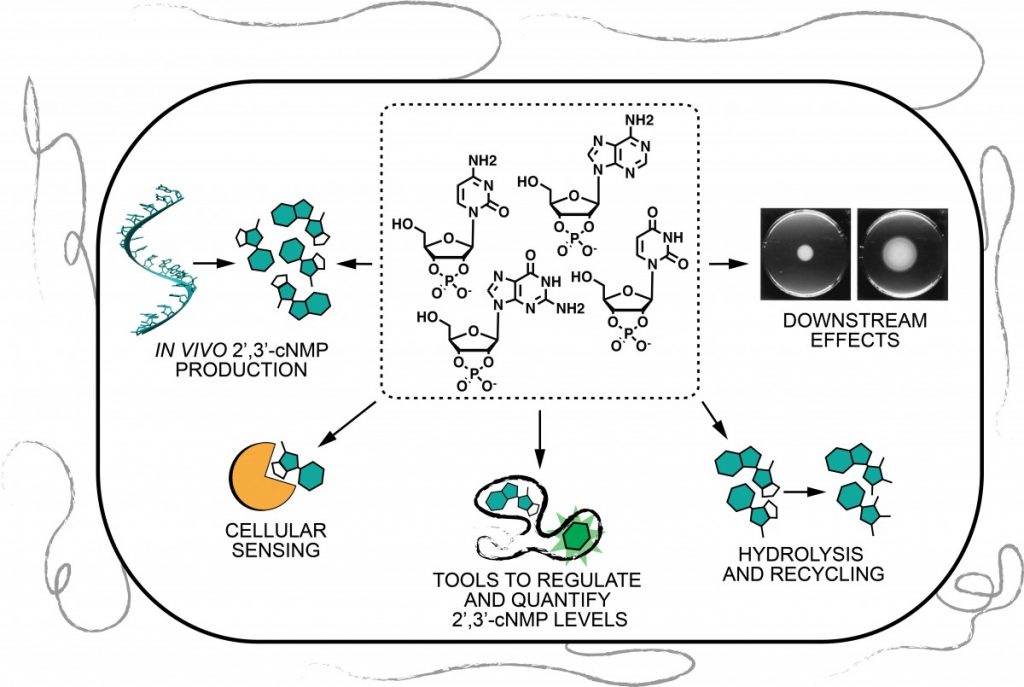
Organisms use 3′,5′-cyclic nucleotides monophosphates as intracellular signaling molecules, allowing them to integrate external stimuli and control numerous pathways. Reports have identified 2′,3′-cyclic nucleotide monophosphates (2′,3′-cNMPs) in eukaryotes and linked levels to cellular stress/wounding (E. Jackson, 2011; T. Van Damme, et al, 2014). We’ve recently discovered that 2′,3′-cNMPs are produced in bacteria and are products of a previously undiscovered RNA degradation pathways involving RNase I. Furthermore, we’ve found that 2′,3′-cNMP levels are linked to biofilm formation, suggesting that these nucleotides regulate important bacterial phenotypes.
We’re currently working to improve our understanding of the physiological roles of 2′,3′-cNMPs, as well as the enzymes involved in 2′,3′-cNMP metabolism and sensor proteins responsible for monitoring the intracellular concentration. To do so, we’ve developed molecular tools to regulate 2′,3′-cNMP levels in bacteria and are using these tools to probe the cellular effects and proteins involved.
Papers related to the 2′,3′-cNMP project:
Fontaine, B.M.; Martin, K.S.; Garcia-Rodriguez, J.M.; Jung, C.; Briggs, L.; Southwell, J.E.; Jia, X.; Weinert, E.E. (2018) RNase I Regulates E. coli 2′,3′-Cyclic Nucleotide Monophosphate Levels and Biofilm Formation. Biochem. J. 475, 1491-1506. DOI: 10.1042/BCJ20170906
Jia, X.; Fontaine, B.M.; Strobel, F.; Weinert, E.E. (2014) A Facile and Sensitive Method for Quantification of Cyclic Nucleotide Monophosphates in Mammalian Organs: Basal Levels of Eight cNMPs and Identification of cIMP. Biomolecules, 4, 1070-1092. DOI: 10.3390/biom4041070